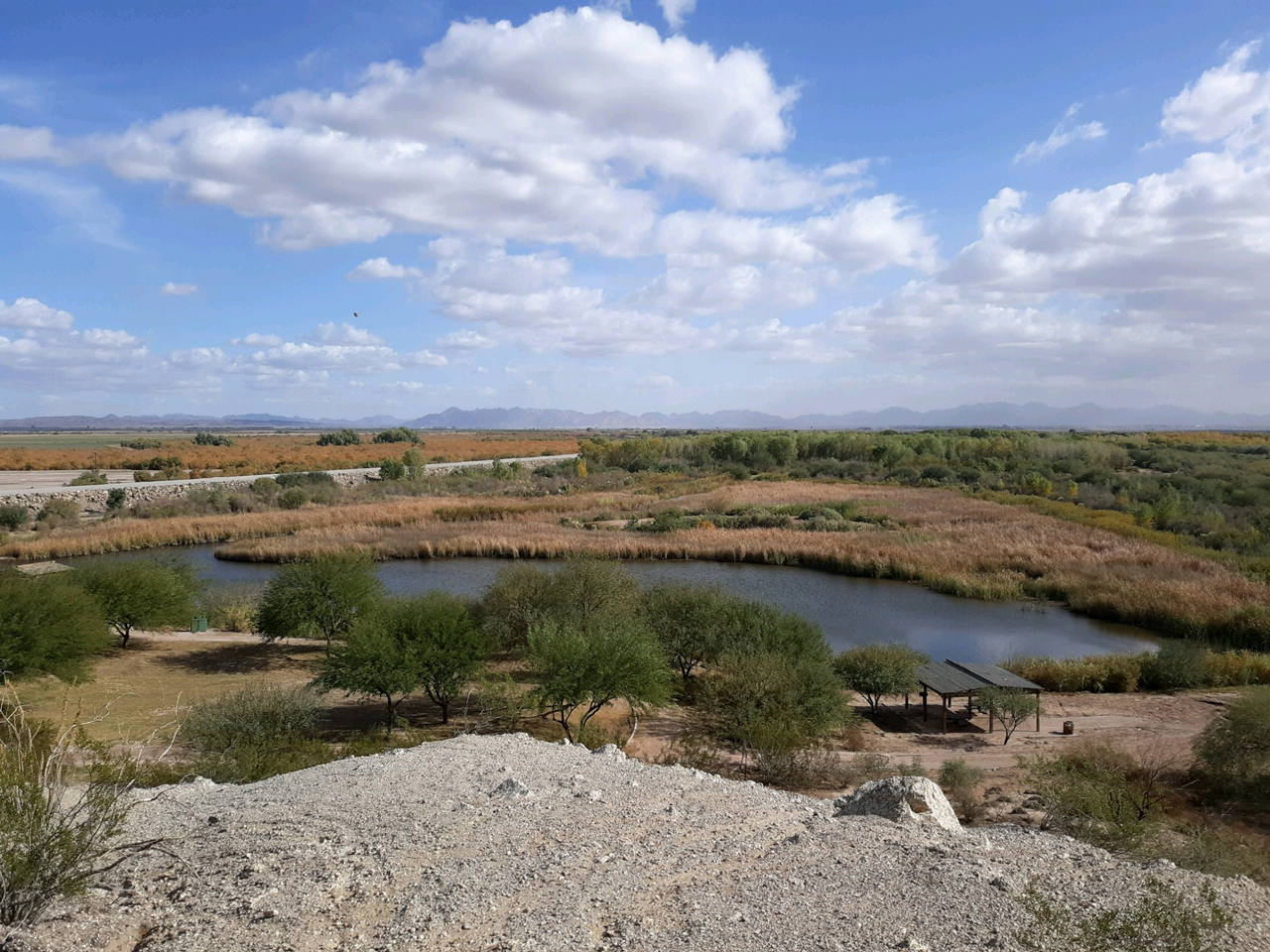Our Habitat Restoration Manager, Matt Wilson and Field Supervisor, Elaine Nichols attended the Riparian Restoration and Tamarisk Beetle Workshop presented by RiversEdge West in Yuma in late November. The workshop covered the Tamarisk leaf beetle and various aspects of a successful river restoration program.

“Tamarisk beetles have a five to six week life cycle and, depending upon latitude, may have up to five generations in a single year. This has facilitated rapid expansion of beetle populations across the southwest.” RiversEdge West
The tamarisk leaf beetle is a biological control that was introduced to reduce large amounts of the invasive species, tamarisk, along the Colorado River and its tributaries. The beetle and its babies eats the leaves of the tamarisk and cause it to turn brown and after years, eventually die. RiversEdge West and their partners shared detailed information on what the beetle is doing and the successes and issues that have developed since its introduction. For more detailed information about the tamarisk leaf beetle you can visit the
RiversEdge West website. As far as the Verde River is concerned, the tamarisk leaf beetle has not arrived here yet. It is moving in this direction and will most likely make its way to us. One important message gathered from the conference was to be prepared for the tamarisk beetle by removing other invasive species from the area to ensure that native species can move in once the tamarisk dies. This is what we at Friends are working towards by removing arundo, tree of heaven, Russian olive, pampas grass, and fountain grass. If we clear these species before the tamarisk dies then we allow more space for native species to grow. The workshop also covered best practices in a restoration program. Speakers discussed invasive species removal, revegetation, endangered species, planning, monitoring, and more. We were happy to see a lot of our efforts involving invasive species removal and monitoring were in line with what the presenters recommended. We gained new insights in addition to our planning process and are excited to start on revegetation practices. We are excited to get input and do fun revegetation work with RiversEdge West’s Melissa McMaster and our volunteers in the near future! A few of the presentations discussed restoration sites in Yuma. They described all of the work that went into planning and restoring degraded riparian habitat along the Colorado River. On the second day we were given a tour of these restoration sites. As we drove toward the restoration site, we looked out the window and noticed miles of tamarisk along the river. We had never seen so much tamarisk and it made our tamarisk stands on the Verde River look like puddles next to an ocean. We continued down the road and arrived to a drastic change in vegetation. On one side of the road there were cottonwoods and willows and other native species and on the other was tamarisk. There was also a difference in wildlife, on the tamarisk side we did not see any wildlife. However, on the side of the road with native vegetation, we saw egrets, harriers and other waterfowl. This restored site reminded us of our Verde River.

At Friends of the Verde River, we are fortunate to be working on restoration to prevent miles of monocultures from taking over our river instead of working to remove miles of invasive species. We are on the forefront, working preventatively instead of cleaning up after something has taken hold on our river. This tour showed us how lucky we are to have such a beautiful Verde River and how hard we must continue to work to protect it from invasives and degradation to keep it beautiful and healthy. We are grateful for the foresight of everyone who has worked in this field along the Verde River. We are also grateful for Melissa McMaster, the AZ Restoration Coordinator for RiversEdge West, for putting on this conference and helping us so much with our restoration work. She is a wealth of restoration knowledge and we appreciate her work immensely. – Elaine Nichols, Habitat Restoration Field Supervisor

 At Friends of the Verde River, we are fortunate to be working on restoration to prevent miles of monocultures from taking over our river instead of working to remove miles of invasive species. We are on the forefront, working preventatively instead of cleaning up after something has taken hold on our river. This tour showed us how lucky we are to have such a beautiful Verde River and how hard we must continue to work to protect it from invasives and degradation to keep it beautiful and healthy. We are grateful for the foresight of everyone who has worked in this field along the Verde River. We are also grateful for Melissa McMaster, the AZ Restoration Coordinator for RiversEdge West, for putting on this conference and helping us so much with our restoration work. She is a wealth of restoration knowledge and we appreciate her work immensely. – Elaine Nichols, Habitat Restoration Field Supervisor
At Friends of the Verde River, we are fortunate to be working on restoration to prevent miles of monocultures from taking over our river instead of working to remove miles of invasive species. We are on the forefront, working preventatively instead of cleaning up after something has taken hold on our river. This tour showed us how lucky we are to have such a beautiful Verde River and how hard we must continue to work to protect it from invasives and degradation to keep it beautiful and healthy. We are grateful for the foresight of everyone who has worked in this field along the Verde River. We are also grateful for Melissa McMaster, the AZ Restoration Coordinator for RiversEdge West, for putting on this conference and helping us so much with our restoration work. She is a wealth of restoration knowledge and we appreciate her work immensely. – Elaine Nichols, Habitat Restoration Field Supervisor





